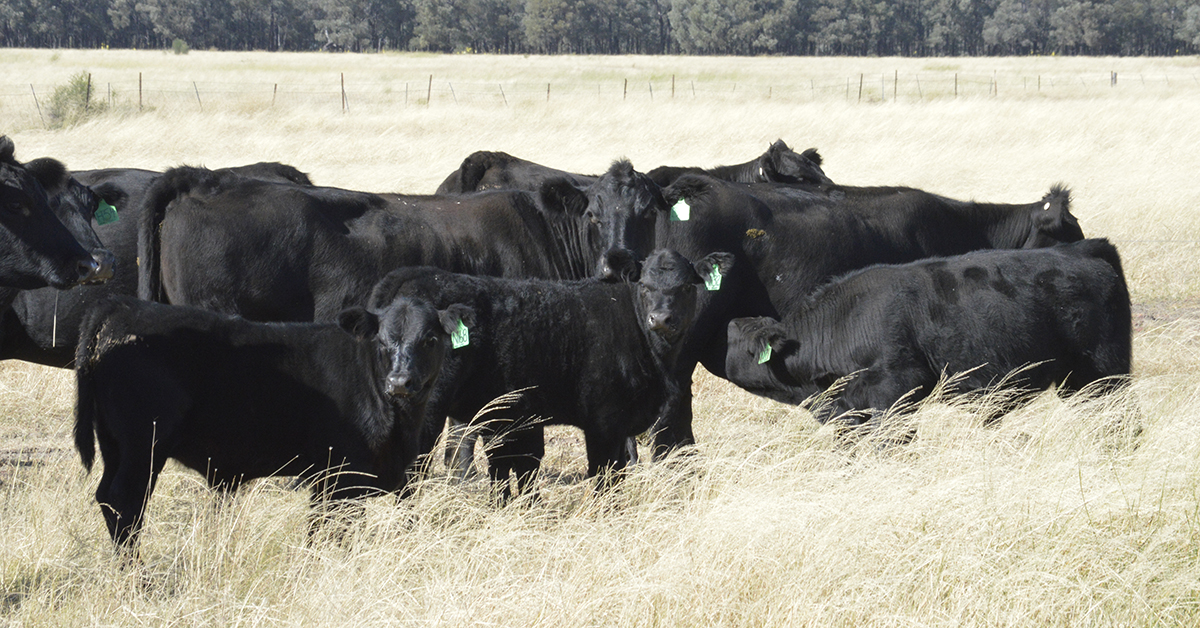Inbreeding depression in the Australian Angus beef cattle herd: cause for concern?


A recent study, supported by the Angus Foundation, has found that while inbreeding depression exists for growth and carcase traits in the Australian Angus population, it is relatively minor in effect.
This is shown by a less than 1% reduction in the average of each production trait included in the study for every 1% increase in inbreeding observed.
Previous studies have demonstrated that on average a 1% increase in inbreeding is associated with a 0.14% reduction in most traits (Leroy, 2014). Recently, within the Australian Angus cattle herd there has been an increasing focus of selection pressures on the genetic improvement of production and carcass traits. Due to the limited research investigating the effect of inbreeding on carcass traits in beef cattle, this project set out to determine the inbreeding depression on production and carcass traits within the Australian Angus beef cattle herd.
The continued selection of influential sires and dams overtime leads to the co-selection and mating of related individuals, deemed inbreeding. The mating of relatives causes the accumulation of homozygous alleles throughout the genome. Whilst, this provides an increase in the uniformity of phenotypic traits across a herd, a desirable outcome for producers. It also has the potential to have negative implications as a result of the reduction in genetic variation across the herd (problematic for future genetic gains), as well as increases in the expression of deleterious recessive alleles and a reduction in the estimated phenotypic expression of an individual known as inbreeding depression. As a consequence of the detrimental implications associated with inbreeding, there has been a growing concern and management of inbreeding in many breeding programs to minimise the loss of genetic gain.
Utilising phenotypic, pedigree and genomic data obtained from Angus Australia, this study determined the inbreeding of animals born post 2012 by three different methods. Inbreeding coefficients were estimated based on pedigree (FPED) and genomic information. For the latter, two estimates were derived based on the diagonal elements of the genomic relationship matrix (FGRM) and runs of homozygosity (FROH). A pedigree of 2,725,423 animals was utilised to calculate FPED and 228, 933 animals with genotypes were utilised to determine FGRM and FROH. The traits analysed included yearling weight (YW), as well as a variety of scanned carcass traits including, eye muscle area (EMA), rib fat (RIB), p8 fat (P8), and intramuscular fat (IMF). Inbreeding depression was calculated, for each trait, by two different models a fixed effects linear regression and a linear mixed effects regression which included random additive genetic effect of each animal to account for between family variation.
The results obtained from the study demonstrated the importance of utilising mixed effects regressions to determine inbreeding depression, as it was able to account for the between family variation. This was most evident when analysing intramuscular fat which demonstrated a positive effect of inbreeding with the use of pedigree inbreeding coefficients and a fixed effects linear regression (Figure 2). It is evident from this study that production and carcass traits are affected by inbreeding depression. Moreover, the effect of inbreeding depression for each of the specified traits to be minor, only representing less than 1% of the mean of each trait for every 1% increase in inbreeding (Figure 1 & 2). Rib fat and P8 fat recorded the greatest losses due to inbreeding depression in comparison to the other traits analysed.


Though, the consequence of inbreeding depressions is minimal for the analysed traits, inbreeding should be managed within the population by maintaining genetic diversity and careful selection and allocation of mates, to ensure long term genetic improvement remains achievable. For future studies, it is recommended that when analysing carcass traits, these are measured post slaughter and ultrasound data is avoided to allow for the full expression of phenotypic variation, especially for IMF.
Written by Hanlie Lubbe